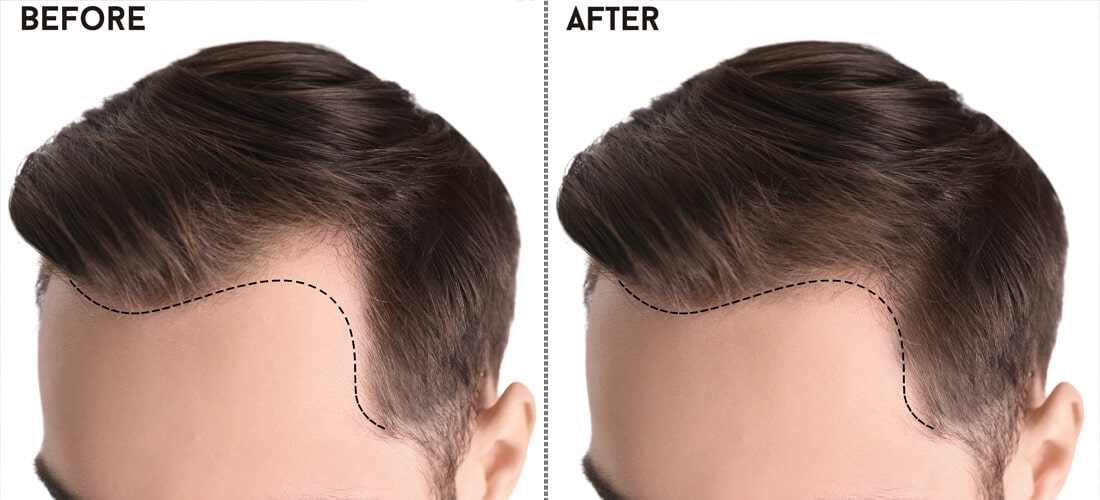
Hair loss is a common concern for men and women worldwide, and Pakistan is no exception. Fortunately, advancements in medical technology have made Hair Transplant in Pakistan a viable solution for those seeking to restore a fuller head of hair. This article provides a comprehensive guide to hair transplants in Pakistan, covering everything from procedures and costs to finding the right clinic and ensuring a successful outcome.
Understanding Hair Loss in Pakistan
Hair loss can be caused by various factors, including genetics (male pattern baldness and female pattern hair loss), hormonal imbalances, stress, medical conditions, and certain medications. In Pakistan, genetics are considered a primary culprit, with a high prevalence of male pattern baldness.
Here’s a breakdown of the common types of hair loss:
Androgenetic Alopecia: This is the most common cause of hair loss, affecting both men and women. It’s characterized by a gradual thinning of hair on the scalp, often starting at the temples and crown.
Alopecia Areata: This is an autoimmune disorder that causes patchy hair loss. It can affect any part of the body, including the scalp, beard, and eyebrows.
Telogen Effluvium: This is a temporary form of hair loss that can be triggered by stress, illness, childbirth, or significant weight loss.
Considering a Hair Transplant?
Hair transplants involve surgically extracting healthy hair follicles from a donor area on the scalp (usually the back or sides) and transplanting them to the bald or thinning areas (recipient area). This allows for natural hair growth in the recipient area.
If you’re considering a hair transplant in Pakistan, here are some essential factors to consider:
Severity of Hair Loss: Hair transplants are most effective for moderate hair loss. If you have extensive baldness, you may not be a good candidate.
Donor Hair Availability: The success of a hair transplant depends on having a sufficient amount of healthy donor hair.
Medical Conditions: Certain medical conditions may increase the risk of complications during or after the procedure. Discuss your health history with a qualified hair transplant surgeon.
Realistic Expectations: Hair transplants offer a permanent solution for hair loss, but results are gradual. It can take up to a year to see the full effect of the transplant.
Hair Transplant Techniques in Pakistan
There are two main surgical techniques used for hair transplants in Pakistan:
Follicular Unit Transplantation (FUT): This is a strip harvesting technique where a thin strip of scalp is removed from the donor area. The strip is then dissected into individual follicular units (groups of 1-4 hair follicles) which are then transplanted to the recipient area.
Follicular Unit Extraction (FUE): This is a minimally invasive technique where individual follicular units are extracted directly from the donor area using a small punch tool. FUE leaves minimal scarring and offers a quicker recovery time compared to FUT.
The choice of technique depends on several factors, including the surgeon’s expertise, the extent of hair loss, and patient preference. FUE is generally considered a more advanced and patient-friendly technique, but it may also be more expensive.
Cost of Hair Transplants in Pakistan
The cost of hair transplants in Pakistan varies depending on several factors, including:
Technique Used: FUE is typically more expensive than FUT.
Number of Hair Grafts Transplanted: The price generally increases with the number of grafts needed.
Surgeon’s Experience and Reputation: Highly qualified and experienced surgeons may charge more.
Clinic Location: Costs may vary slightly between major cities and smaller towns.
As a general estimate, hair transplants in Pakistan can range from PKR 50,000 to PKR 400,000 (approximately USD 300 to USD 2,400). It’s important to consult with several clinics to get quotes and compare costs.
Beyond Cost: What to Consider
While cost is an important factor, it shouldn’t be the sole deciding element. Here are some additional considerations when choosing a hair transplant clinic in Pakistan:
Surgeon’s Qualifications: Ensure the surgeon is board-certified in dermatology or plastic surgery and has extensive experience performing hair transplants.
Clinic Accreditation: Opt for a clinic accredited by a reputable organization, such as the Pakistan Association of Aesthetic Surgeons (PAAS).
Clinic Facilities: Choose a clinic with modern equipment and a sterile environment.
Pre-operative Consultation: A thorough consultation allows the surgeon to assess your suitability for a transplant and discuss your expectations.
Patient Reviews and Results: Research the clinic’s reputation by reading online reviews and looking at before-and-after photos of previous patients.






